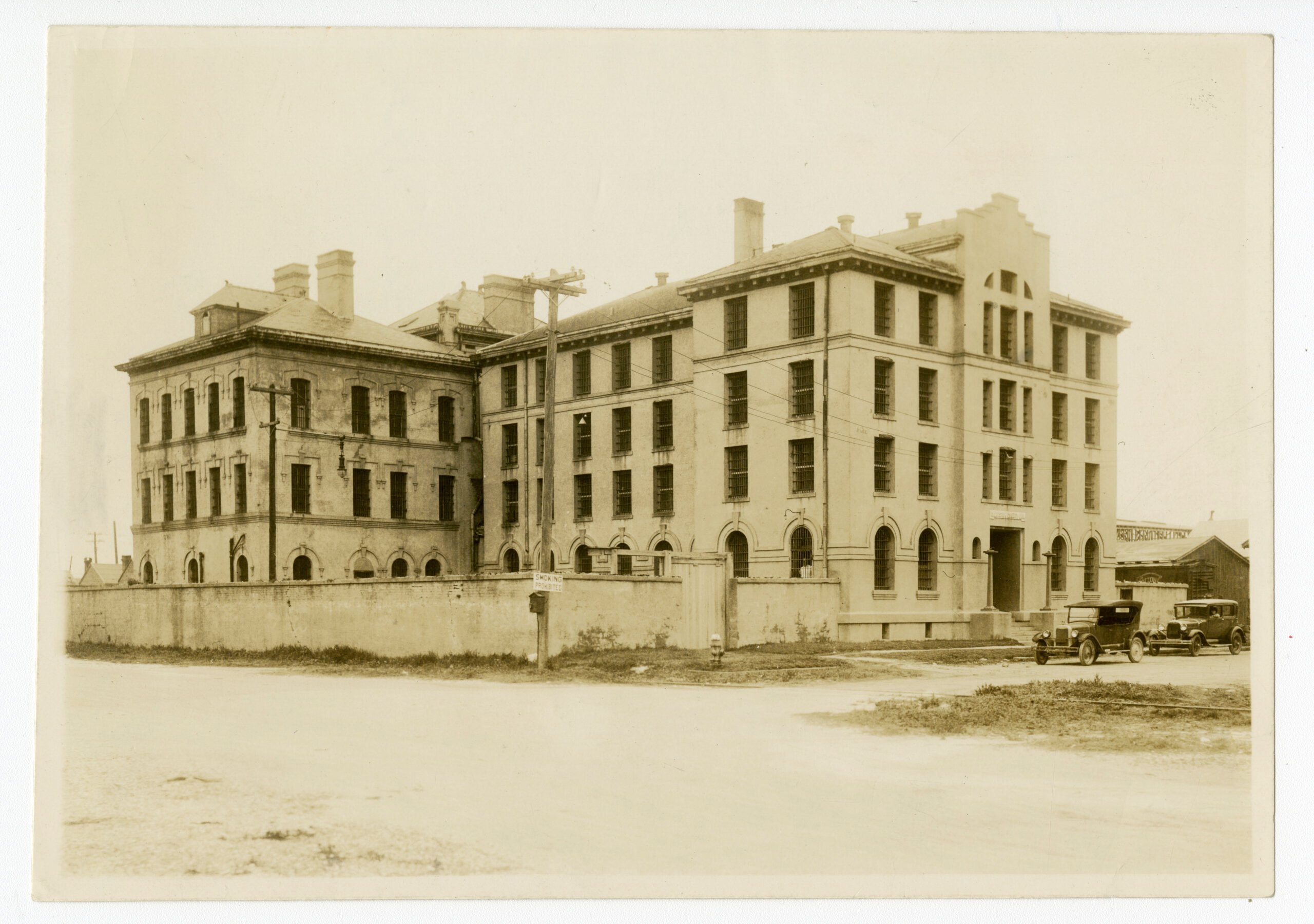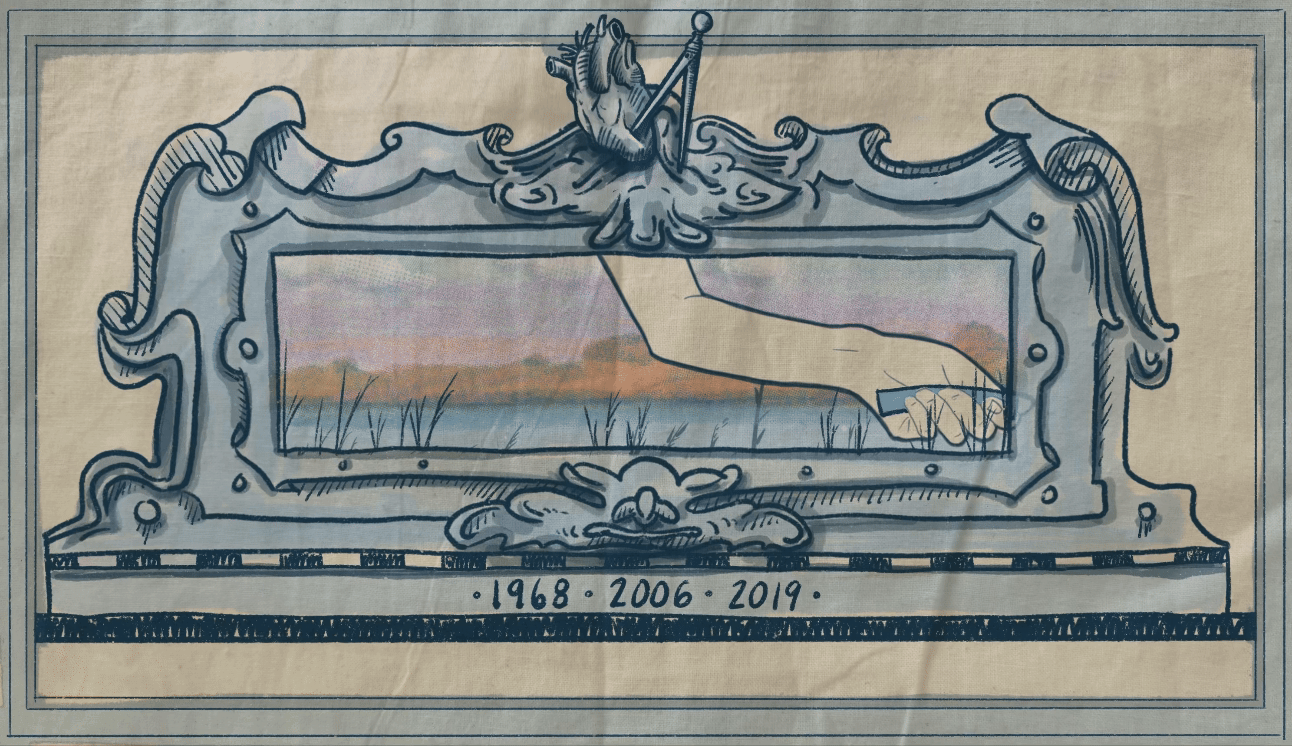The Time-Traveler’s Guide to the Lower Pecos
Hidden away on private land in Southwest Texas is some of the oldest and best-preserved prehistoric rock art in the world. The Rock Art Rendezvous offers a rare glimpse.
–
by Rose Cahalan
@rosecahalan
May 7, 2018
I’m standing on a cliff more than 300 feet above the Devils River, walking slowly across a very narrow ledge, when my foot slips. This sends a pebble skittering down, bouncing off a clump of prickly pear before launching into the void. After I regain my balance, it’s hard to look anywhere but at the improbably turquoise water far below, and to think of anything other than how easily I could follow that pebble. “Almost there,” says Ute Hall, who is perched on the other side of the ledge. “One step at a time.” A volunteer guide with the Witte Museum in San Antonio, Hall is originally from Germany, and I find her clipped accent oddly reassuring in this moment. Less comforting is the fact that a few minutes earlier, while rigging up a climbing rope for my fellow visitors to clutch while shimmying across the precipice, she’d asked cheerfully, “Does anyone here know how to tie knots?”
But it’s too late to worry about that. A few more steps and I’m in the rock shelter on the other side, blinking as my eyes adjust to the shade. I look up and immediately forget about the terrifying passage. Before me is a huge red panther, at least 7 feet long. He stands in a powerful crouch, every detail on his body clearly visible: the claws on his feet, the bristles on his tail, the large rounded ears on his head. To his right is a humanlike figure with arms outstretched. The undulating vertical lines running alongside the man’s body make me wonder if he is flying, or maybe dancing. I ask Hall what they might mean, and she shakes her head. “We don’t know.” Every minute or so, another member of our 20-person group arrives in the shelter to gape open-mouthed at the creatures painted on the rock: “Wow wow wow.” “Holy shit!” “Will you look at that?” One man is so riveted that he barely seems to notice when a yellow jacket — there’s a nest of them on the cliff overhang — stings him in the armpit. “I’m fine,” he says, waving away help as he kneels to look up at the panther.
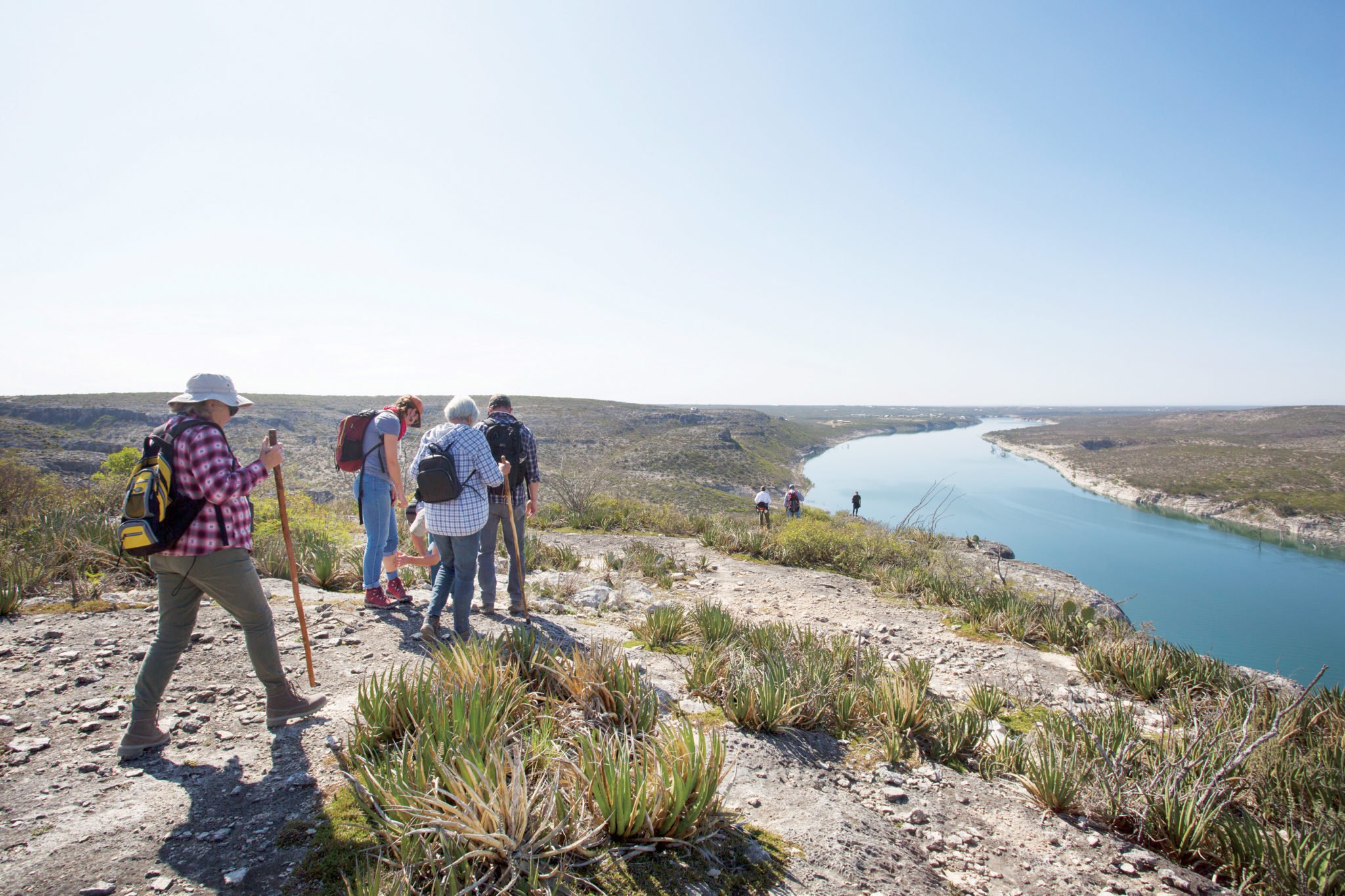
All of us have traveled to this remote stretch of Southwest Texas — a dry, empty, scrubby region that researchers call the Lower Pecos Canyonlands — to see prehistoric rock art as old as 4,000 years. Most Texans don’t know that this place is home to one of the world’s best and largest collections of ancient pictographs, or what archaeologists refer to as “the oldest manuscripts in North America.” In limestone shelters above the Pecos and Devils rivers, complex artworks composed by hunter-gatherers have quietly endured for millennia. Scholars are just beginning to understand them, and have recently embarked on an ambitious quest to exhaustively document all 350 known sites and counting — a new one was discovered less than a month before my visit — by 2020. Though the region’s arid climate and limestone geology are a recipe for good preservation, threats as diverse as flooding, erosion, inquisitive goats and the ceaseless march of time add to the urgency.
Unlike most American rock art, the majority of these works are tucked away on gated ranches — no surprise in Texas, where 96 percent of land is privately owned. That means the pictographs are protected from graffiti and other damage visitors can cause; it has also contributed to their obscurity among both scholars and the public. Few will ever get the chance to see these incredible places. But for one weekend each of the past 24 years, landowners have opened their property to visitors from across the state. A little-known event called the Rock Art Rendezvous, hosted by the Witte Museum, offers three days of guided tours at a rotating lineup of the best pictograph sites. Visitors drive on dirt roads, hike across sunbaked ranchland and scramble down cliffs, all for the chance to stand in front of ancient murals and wonder: Who made these? What do they mean? And can we save them before it’s too late?
–
The term “ghost town” is overused to describe tiny Texas towns, but in Comstock it doesn’t feel like hyperbole. Highway 90 stretches past a long-abandoned catfish restaurant, chairs and tables still visible through the grimy windows; a sign advertising “DEER STORAGE”; and what was once the Seminole Inn Cafe. There’s a rusty water tower, and a train sitting sedately on the tracks. The one restaurant in town, the J&P, is the kind of place where everybody turns in unison to look when the door swings open. Every other vehicle seems to be a green-and-white Border Patrol pickup, and my phone buzzes with a text from Verizon: “Welcome to Mexico!”
Eventually I reach a blown-over gas station, its twisted canopy resting at a dramatic 45-degree angle. Just across the highway is the gate to the White Shaman Preserve, wide open and decorated with colorful streamers. A handwritten sign reads, “Welcome to Rendezvous! Drive slow.” Owned by the Witte Museum, the preserve includes the White Shaman mural, one of the best-studied and most complex rock art sites in the area. It’s also home base for the Rendezvous, offering guests dry camping, coffee and sweet rolls for breakfast, a generously sized fire pit and a covered shelter from the wind. Most of the 130 attendees seem to be upper-middle-class and upper-middle-age, with a smattering of younger folks. They come from across the state and include an architect, several retired teachers, a corporate attorney, a physics professor, engineers and geologists. I spot at least two Subarus with Sierra Club stickers.
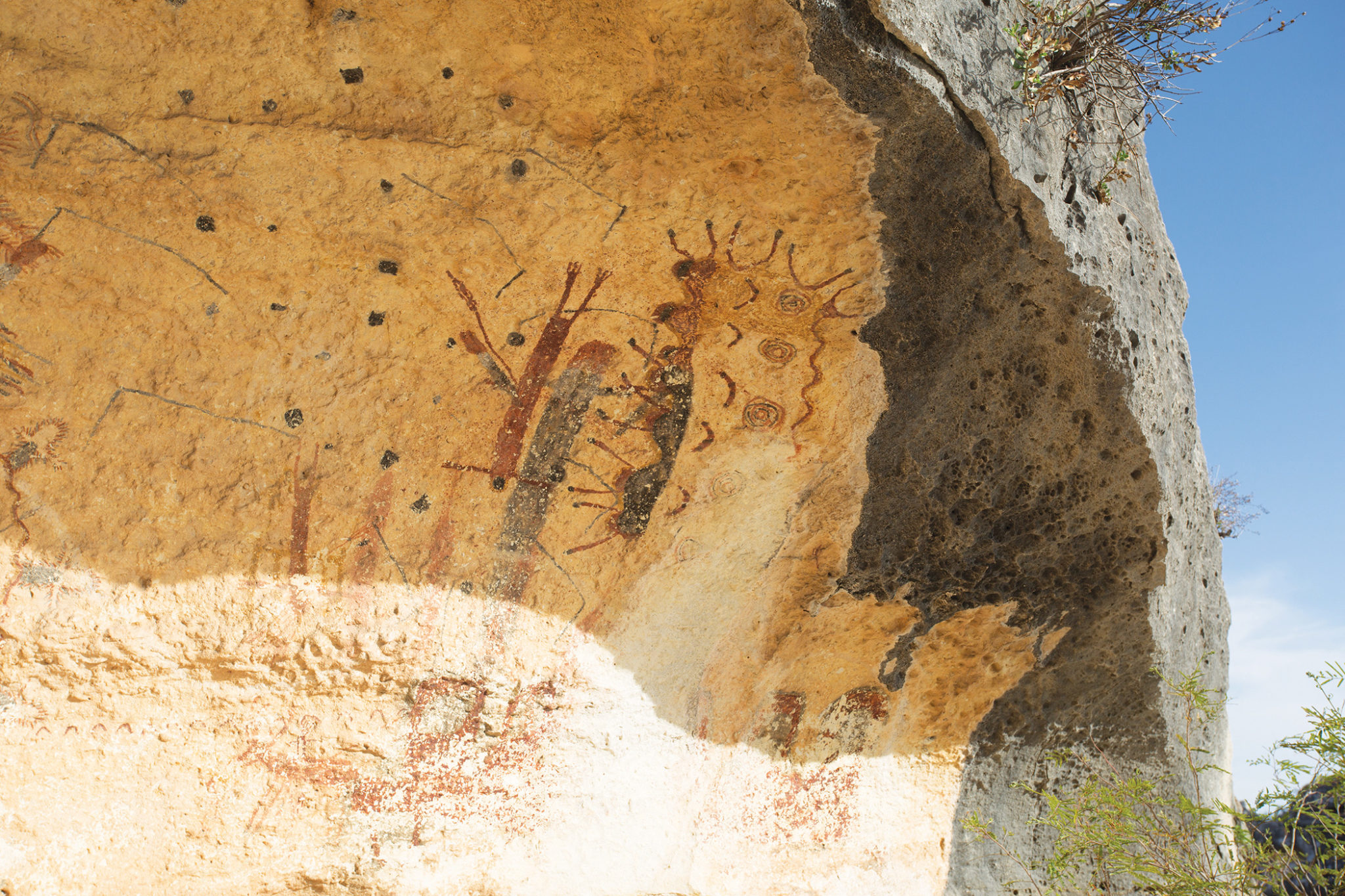
It’s here that I meet Bryan Bayles, a Witte Museum curator and director of the preserve. Bayles has shaggy red hair, a tiny silver earring and a coffee mug with the cartoon characters of South Park and the slogan “Life is Only Pain.” Trained as a medical anthropologist, he did his graduate fieldwork with indigenous midwives in Chiapas. He also plays the drums in a punk band called Muscle Car and is relentlessly upbeat. “There are very, very few spots on the planet like this,” Bayles says. “Lower Pecos rock art is up there with the cave paintings of France and the rock art of South Africa and Australia. And so few people know it’s in our backyard! So raising awareness of this place and the importance of documenting it is really vital.”
Though Bayles has led dozens of tours to the White Shaman mural and other sites, he sees something new each time. “A couple weeks ago I was here, and something happens when it’s foggy and humid and the air is the right temp,” he says. “There are these little white figures I’d never seen, and the weather made them pop out. Didn’t know they were there!” He shakes his head. “There’s still so much we don’t know,” he says, “though Carolyn Boyd has made an incredible advance, of course.”
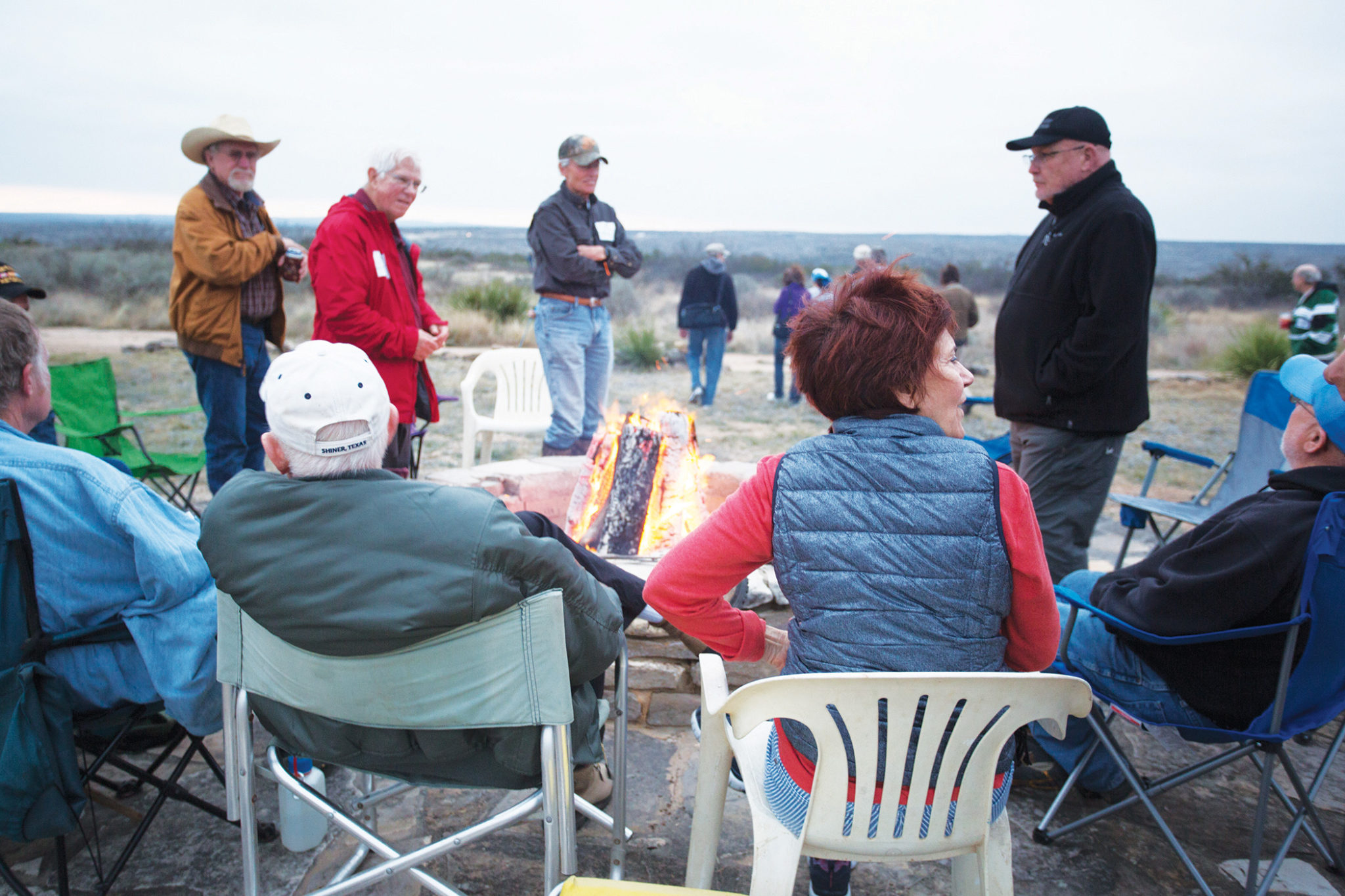
Boyd, an artist turned archaeologist, is the undisputed authority on Lower Pecos rock art and especially the White Shaman. People speak of her in reverential tones. Through two decades of study, she disproved the long-held notion that the White Shaman — and the region’s rock art in general — was merely decorative, an inscrutable sketch. “Nothing about the White Shaman mural was random,” Boyd writes in her award-winning 2016 book on the subject. “Every image was intentionally placed. … It is a creation story detailing the birth of the sun and the dawn of time.”
After the random doodle idea was debunked, some believed that the rock art was the product of shamanic trances — religious experiences recorded after tripping on peyote and datura. While it’s true the prehistoric people of the Pecos used hallucinogens for sacred purposes, scholars now know that view is far too simplistic. “I encourage people to think of the rock art as holding multiple layers of meaning, like literature,” Bayles says. Researchers are also finding patterns that hold true across cultures, such as the use of a serpent to represent the boundary between the underworld and our world. “We’re starting to learn that there’s a core set of principles and beliefs widely shared in indigenous Texas, New Mexico and Arizona down into Mesoamerica, and these people were somehow tapped into that,” Bayles says. “We’ve barely scratched the surface.”
–
“Prayer is the best way to meet the lord, but trespassing is faster,” reads a sign outside the gate to the Meyer’s Spring Ranch. After driving about an hour northwest of the White Shaman Preserve in a slow and dusty caravan of cars, I’ve arrived at this 19,000-acre hunting ranch to see one of the biggest rock art sites in the region. The spot is a testament to the power of water: A spring here has drawn people to bathe, relax and make art for thousands of years. A nearly 100-foot-long wall is covered in a staggering quantity of every known style of rock art, ranging from a 3,000-year-old Lower Pecos-style pictograph to historic scenes from the mid-1800s that include Spanish missions and priests. Retired Sul Ross University archaeologist Reeda Peel, who has studied the site, takes more than an hour to slowly lead the group across the wall, explaining each motif as she goes. “Do you see the missing limbs on this woman slumped over the horse?” she says, pointing to a figure most likely painted in the early 1800s by a member of a Plains Indian tribe. “That probably indicates she was a captive. You need feet to run away.” A lizard suns itself on a ledge overhead, watching lazily.
Next, Peel points out a painting of a black bear — one of only three known to appear in Texas pictographs, she says. “We’ve caught a bear on the game camera,” chimes in Thad Steele, the landowner. Steele, an El Paso executive, rents out cabins to hunters. You can pay $3,000 to shoot a whitetail buck on the ranch, whose website features photos of hunters posing with their trophies in front of the rock art. One man grins as he drapes a dead bobcat over his neck. “I consider myself a steward of the rock art,” says Steele, explaining that he’s worried about how repeated floods have degraded the pictographs. He points out the waterline from the most recent flood, which washed away some of the pigment. A civil engineer advised him to move boulders that could divert the water. After the tour, Steele and Greg Williams, the former president of the Rock Art Foundation — a nonprofit that owned the White Shaman Preserve and led the Rendezvous until it handed over both to the Witte Museum last year — stand around and talk about the site. The men know each other well, and that’s by design.
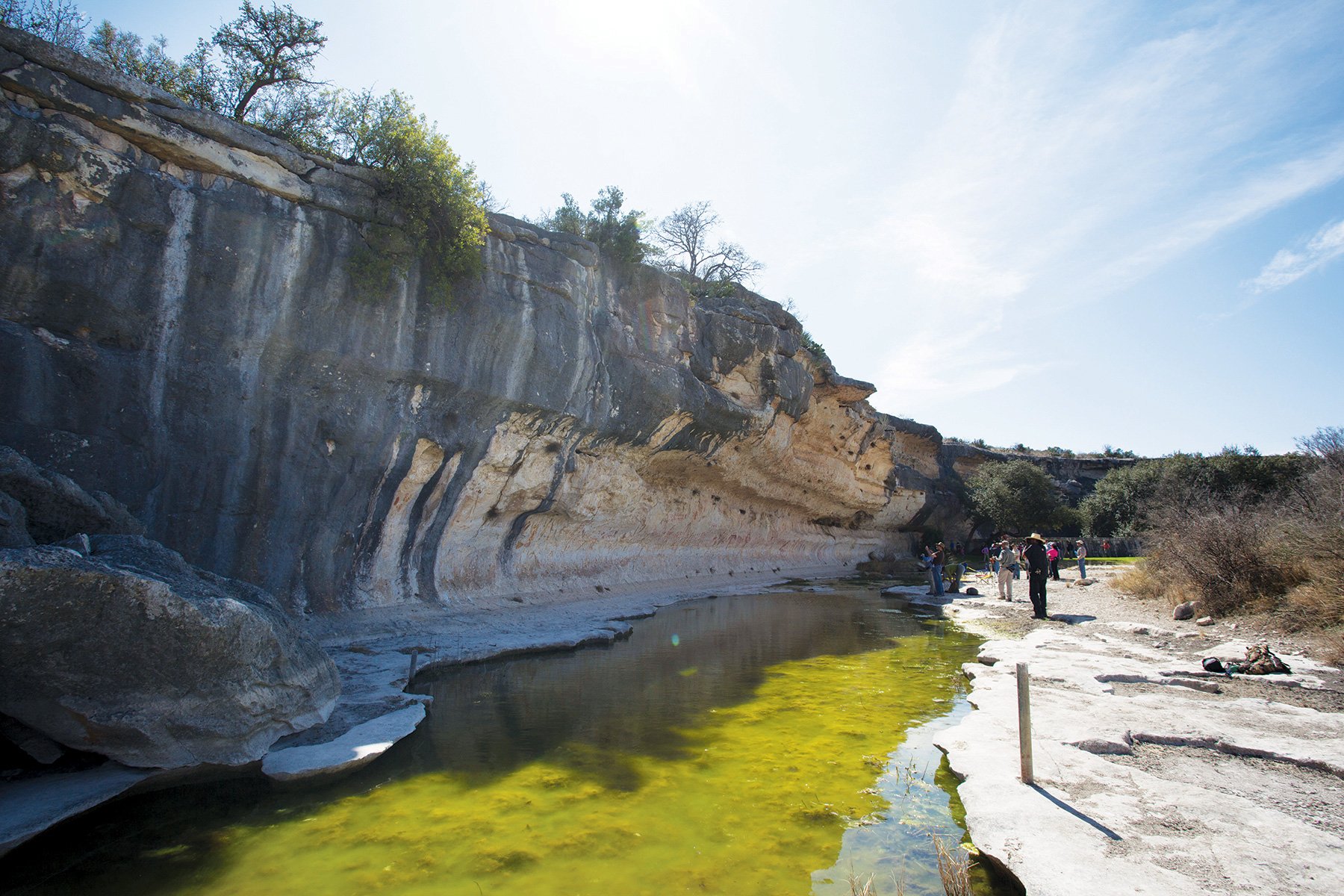
“It takes years and years to build trust with the landowners,” Williams tells me. “Our most valuable commodity, when it comes to protecting the rock art, is the relationship with them. You do one bad thing, and it could all go away.” Not all landowners open their property to scholars. Peel says there’s another site she used to study, until it was sold to a corporation that doesn’t welcome researchers. For his part, Steele says he worries about the liability that comes with crowds. He’s currently being sued by a guest who “got drunk and fell down some stairs” during a hunting trip, he says.
“There are those who would prefer not to have anybody know about the art on their property, and that’s their prerogative,” says Jessica Lee, executive director of the Shumla Archaeological Research and Education Center. “Maybe in 20 years they’ll change their mind. We’ll be here.”
Earlier, Lee — who wears a bright Southwestern vest and cowboy boots, and uses the word “mind-blowing” frequently — showed me around the Shumla Center’s small office in Comstock. Hiking sticks and well-worn backpacks hang on hooks above the desks where the staff of 10 works. Around the corner, a dark, cool room is filled with a steady electronic hum. This is where a server stores the 6 terabytes of data accumulated so far through the Alexandria Project, Shumla’s attempt to document all Lower Pecos rock art by 2020. At each site, archaeologists take thousands of photos, which are then used to create sophisticated 3-D models; a massive panorama called a GigaPan; and 2-D images so sharp that the viewer can zoom into a single grain of sand. The goal is to digitally re-create the entire body of art so that it will exist online, free for future generations to study. Is there any precedent for that kind of massive visual database? “Not really,” Lee says, and she laughs. “At least, not without millions and millions of dollars. But we’re working on it!” The center operates with a lean $700,000 annual budget, and Lee spends half her time in Dallas, fundraising.
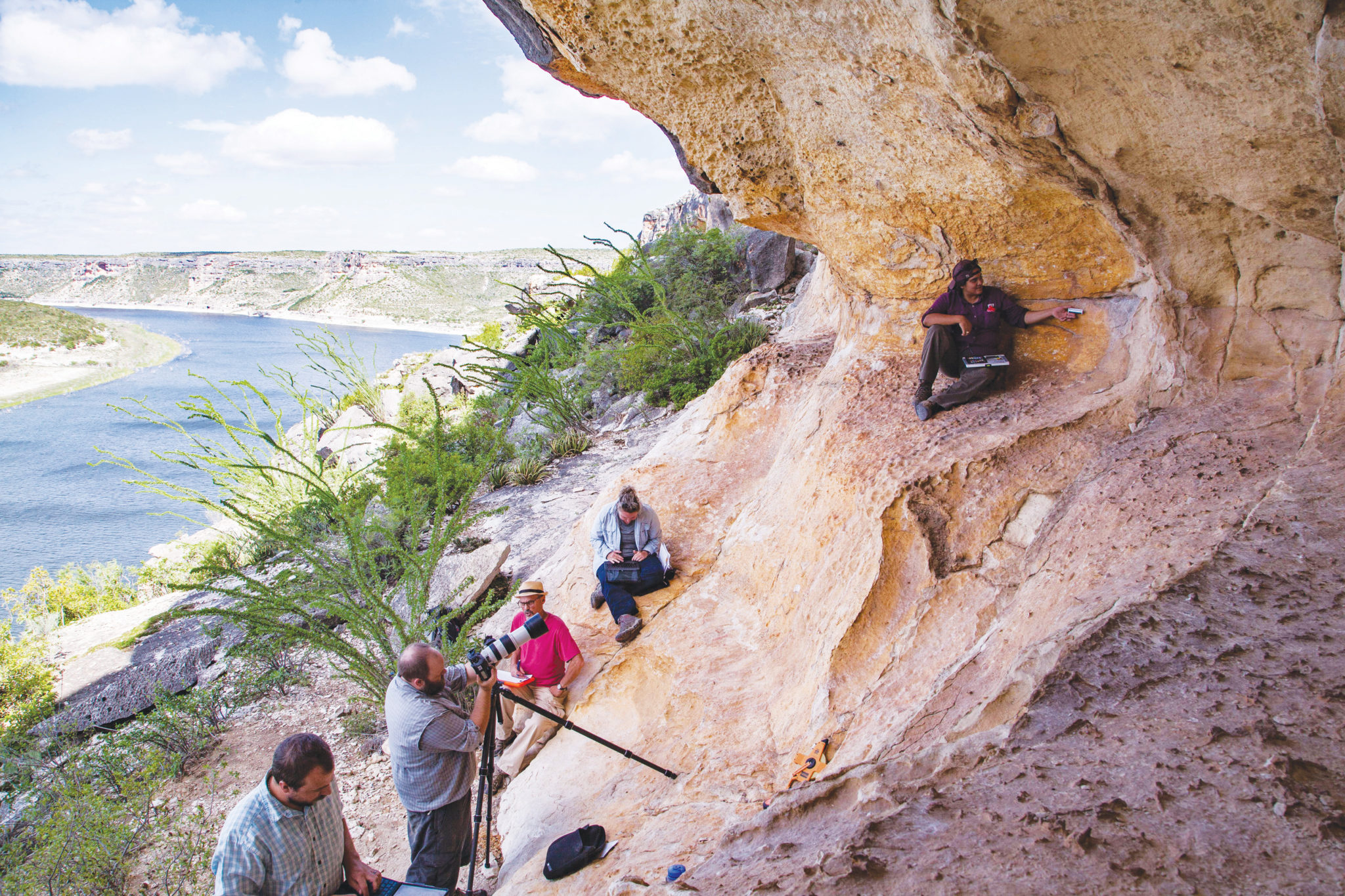
“This project is going to revolutionize our understanding of the rock art,” she says. “The sun continues to shine. The dust continues to blow. Some sites will go like this” — she snaps her fingers — “in a flood. Others will degrade slowly over many years. But if we can capture them now, it won’t matter, because we’ve got them.”
Climate change has likely sped up the loss of the art, bringing more frequent and severe floods, as well as higher humidity. Comparing modern photos to those that are 40 or 50 years old — a blink in the lifetime of a 4,000-year-old painting — shows how quickly the colors can fade. So the Shumla team is working at a steady clip. They’ve documented 53 sites so far, with 300 still to go.
Among the next big research questions: how rock art motifs vary across time and space, what role astronomy played, and why the style is confined to the Lower Pecos. “Why here? Was this a pilgrimage location where nomadic peoples were moving in larger tracts but coming at certain times to intermarry, to teach or share belief systems?” Lee asks. “It’s so unusual.”
Rock art is the result of a timeless human instinct, she adds. “They were looking up at the stars, creating explanations for what they saw,” Lee says. “It’s endless, what we want to know.”
Top photo by Chris Cahalan.


